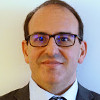Author: James Heidrich (PMP, ACP, DASSM, RMP, DAC, Prosci) 
Dear PMI Switzerland Members,
As a passionate member of our community and a master's candidate, I am excited to invite you to participate in a pivotal survey for my thesis: "Exploring Programme Management Frameworks and Methodologies: The Path to Successful Business Transformations."
This survey aims to gather diverse perspectives and experiences from professionals like you, offering a unique opportunity to contribute to groundbreaking research in our field.

Why Participate?
- Influence the Future of Programme Management: Your insights will directly shape the understanding of how different methodologies impact business transformations, influencing future practices and strategies.
- Access to the Final Thesis: As a token of appreciation, participants who choose to leave their email at the end of the survey will receive an exclusive copy of the completed thesis. This document will offer comprehensive insights and analysis, potentially benefiting your future projects and professional development.
- Networking Opportunity: Your participation opens the door to future collaborations and networking with professionals who share your interest such as our planned PMO Community of Practice.
- Enhance Your Knowledge: By engaging with the survey, you'll gain a deeper understanding of current trends and methodologies in programme management from the shared results.
Survey Details:
- Duration: The survey will take approximately 8-10 minutes to complete.
- Confidentiality: All responses will be kept confidential and used solely for the purpose of this research.
- Feedback Option: Participants can opt to receive the final dissertation, and results will be shared in a future PMI Switzerland newsletter article.
How to Participate:
Please follow this link to the survey to begin. Your input is invaluable, and I sincerely appreciate your time and expertise.
Thank you for your support in advancing our field and contributing to a comprehensive understanding of programme management frameworks and their effectiveness in business transformations.
Warm regards,
James Heidrich



